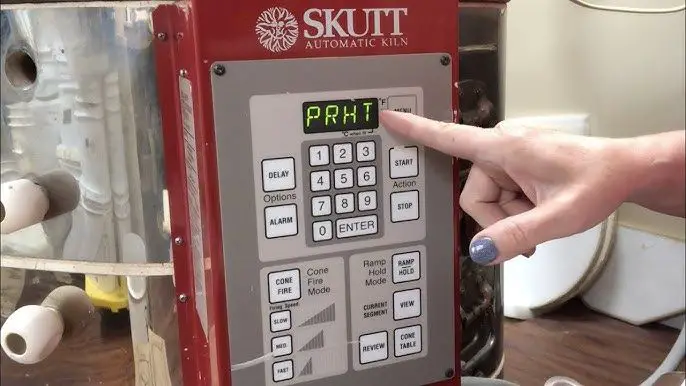Can You Use Water To Smooth Air Dry Clay?
What is Air Dry Clay?
Air dry clay, also known as self-hardening clay, is a type of modeling clay that cures naturally and does not require baking. It hardens over time as water evaporates out of the material. Air dry clay is a popular choice for artists, crafters, educators, and hobbyists thanks to its versatility, ease of use, and non-toxic qualities.
There are a few main types of air dry clay:
- Polymer clay – Made from PVC, resin, and plasticizers. It’s lightweight, flexible, and strong when cured.
- Cellulose clay – Made from cellulose fibers from wood pulp or cotton linters. It’s very lightweight.
- Paper clay – Made by mixing paper pulp with clay. It’s also lightweight and easily molded.
Some key properties that make air dry clay a versatile material to work with:
- Does not require baking or firing, it air dries naturally
- Non-toxic and low odor
- Can be recycled and reused indefinitely
- Takes 1-7 days to fully cure depending on thickness
- Smooth, pliable texture for sculpting details
- Can be painted, sanded, drilled, and finished when dry
Advantages and Disadvantages of Air Dry Clay
Air dry clay offers a few key advantages that make it appealing for crafters and artists:
- Easy to use – Air dry clay is ready to use straight out of the package. There is no baking or firing required. It air dries at room temperature.
- Low mess – Compared to traditional clay that requires firing, air dry clay does not need water and creates less mess during sculpting.
- Fast drying – Air dry clay fully cures and hardens at room temperature within 24-48 hours.
- Paintable – Once cured, air dry clay can be painted with acrylics, watercolors, oils, and more. Its surface takes paint well.
However, there are some disadvantages to be aware of:
- Fragile when dry – Fully cured air dry clay is lightweight but also fragile. Pieces may chip or break if dropped or handled roughly.
- Limited working time – Air dry clay begins drying immediately while you sculpt. This means you have limited time to work and make changes before it hardens.
Smoothing Techniques for Air Dry Clay
There are several techniques that can be used to help smooth air dry clay surfaces for a flawless finished look:
Using water – One of the most common smoothing methods is applying a small amount of water to the surface using a wet brush, sponge, or finger. The water slightly moistens the outer layer, allowing you to blend irregularities and smooth seams.
Using oil or glycerin – Applying a drop of vegetable oil, mineral oil, or glycerin with a brush or finger can also help smooth and condition the clay, allowing you to gently blend the surface. Glycerin prevents drying too quickly.
Burnishing – Rubbing the clay surface vigorously with a spoon, craft stick, or specialty burnishing tool compresses it and evens out textures and lines for a uniform appearance.
Sanding – Once completely dry, air dry clay can be lightly sanded with fine grit sandpaper to flatten edges and get rid of unwanted texture. Start with 220 grit and move up to 400 or 600 grit for the smoothest finish.
Can You Use Water to Smooth Air Dry Clay?
Yes, you can use water to help smooth and soften air dry clay. The water slightly rehydrates the outer layer of the clay, allowing you to smooth away fingerprints, uneven textures, and unintended marks. Using water enables you to achieve a uniform surface and refine the details of your air dry clay creation.
However, there are a few things to keep in mind when using water to smooth clay:
- Use only a light misting of water. Too much will overly saturate the clay, breakdown its structure, and cause cracking or crumbling.
- Work in small sections, misting and smoothing one area at a time before moving on.
- Allow the smoothed section to dry slightly before handling again or adding new clay.
- Water smoothing works best on the surface. Avoid over-wetting crevices or undersides.
With a delicate touch and proper technique, a light mist of water is an effective way to smooth air dry clay to perfection.
Step-by-Step Process
When using water to smooth air dry clay, it’s important to follow some key steps:
Lightly mist your work area and the clay with water from a spray bottle. Be careful not to soak the clay or make it excessively wet. Just a light misting is all you need.
Smooth the clay with your fingers, a silicone tool, or fine grit sandpaper. The water acts as a lubricant, allowing you to gently massage out any imperfections in the surface and achieve a smooth finish.
Allow to fully dry before additional handling. It’s critical to let the clay dry completely before touching or moving it further. This prevents accidental smudging while the clay is still damp.
Following these simple steps allows water to be used effectively for smoothing without compromising the clay.
Ideal Amount of Water
When using water to smooth air dry clay, it’s important not to oversaturate the clay. The goal is to create a damp surface rather than a soaked one. The best method is to lightly mist the surface with water using either a spray bottle or soft brush.
Avoid holding the clay under streaming water or submerging it completely, as this will make the clay too wet. Just a light misting is sufficient to provide enough moisture for smoothing without compromising the clay’s structure and stability.
Test the moisture level by touching the clay. It should feel cool and slightly damp but not dripping wet. If water pools on the surface or if your fingers come away wet, allow time for excess moisture to evaporate before continuing to smooth.
With the right amount of water, you’ll be able to blend and erase imperfections in the clay while maintaining its shape and form. This takes some practice, so don’t be afraid to experiment to find the ideal moisture level for your specific air dry clay project.
Timing Considerations
When working with air dry clay, timing is crucial for getting the best smoothing results. Unlike clay that requires baking, air dry clay has a much shorter working time. This means you only have a small window where the clay is damp enough to smooth effectively before it dries.
Air dry clay is designed to dry at room temperature within 24 hours or less. So as soon as you’ve finished sculpting and want to smooth seams or imperfections, it’s important to work quickly. The clay can only be smoothed successfully while it’s damp and still malleable.
Waiting too long will result in the clay drying and hardening, making it impossible to smooth. Working swiftly as soon as you’ve finished sculpting gives you the best chance of smoothing before the clay dries out. Timing is critical for achieving your desired finishing results when using air dry clay.
Results of Water Smoothing
Using water to smooth air dry clay can provide some benefits but also has some drawbacks to be aware of. The water allows you to manipulate the clay without it sticking to your fingers or tools. It also softens the surface nicely, allowing you to blend seams and erase fingerprints.
However, adding water may elongate the drying time significantly. It can also reactivate chemicals in the clay that cause it to break down over time. Too much water may lead to cracking or crumbling after drying. It’s best to use sparingly and blot away excess moisture before allowing your project to dry.
Alternatives to Water
While water can be used to smooth air dry clay, there are some alternatives that work as well. Using other liquids in place of water can also help avoid issues like over-softening or breakdown of the clay chemicals.
Oils such as baby oil or mineral oil can be effective for smoothing air dry clay. The oil permeates the outer layer and softens it gently without compromising the structure. Glycerin is another good option – it has a thicker consistency compared to water so doesn’t oversaturate the clay. Lemon juice contains citric acid which works to lightly smooth the surface.
The benefit of using oils, glycerin or lemon juice rather than water is that they generally won’t cause any adverse chemical reactions or breakdown of the clay material itself. This allows you to get the desired smoothing effect without damaging the clay’s ability to fully harden and cure over time. Just a small amount spread evenly over the surface is all that’s needed.
Tips for Best Results
When using water to smooth air dry clay, there are some tips to follow for achieving the best results:
Lightly mist and smooth quickly – Only use a light misting of water on the surface. Too much water can lead to cracks or dissolving of details. Work quickly after misting to smooth before the water is absorbed.
Allow to fully dry before painting or sealing – It’s important to let the clay fully dry after water smoothing before applying any finishes. Trapped moisture can cause issues down the road.
May require light sanding after – Once fully dry, you may need to do some minor sanding to smooth out any uneven areas. Start with 220 grit sandpaper and go up to 400 or 600 grit for a silky smooth finish.


